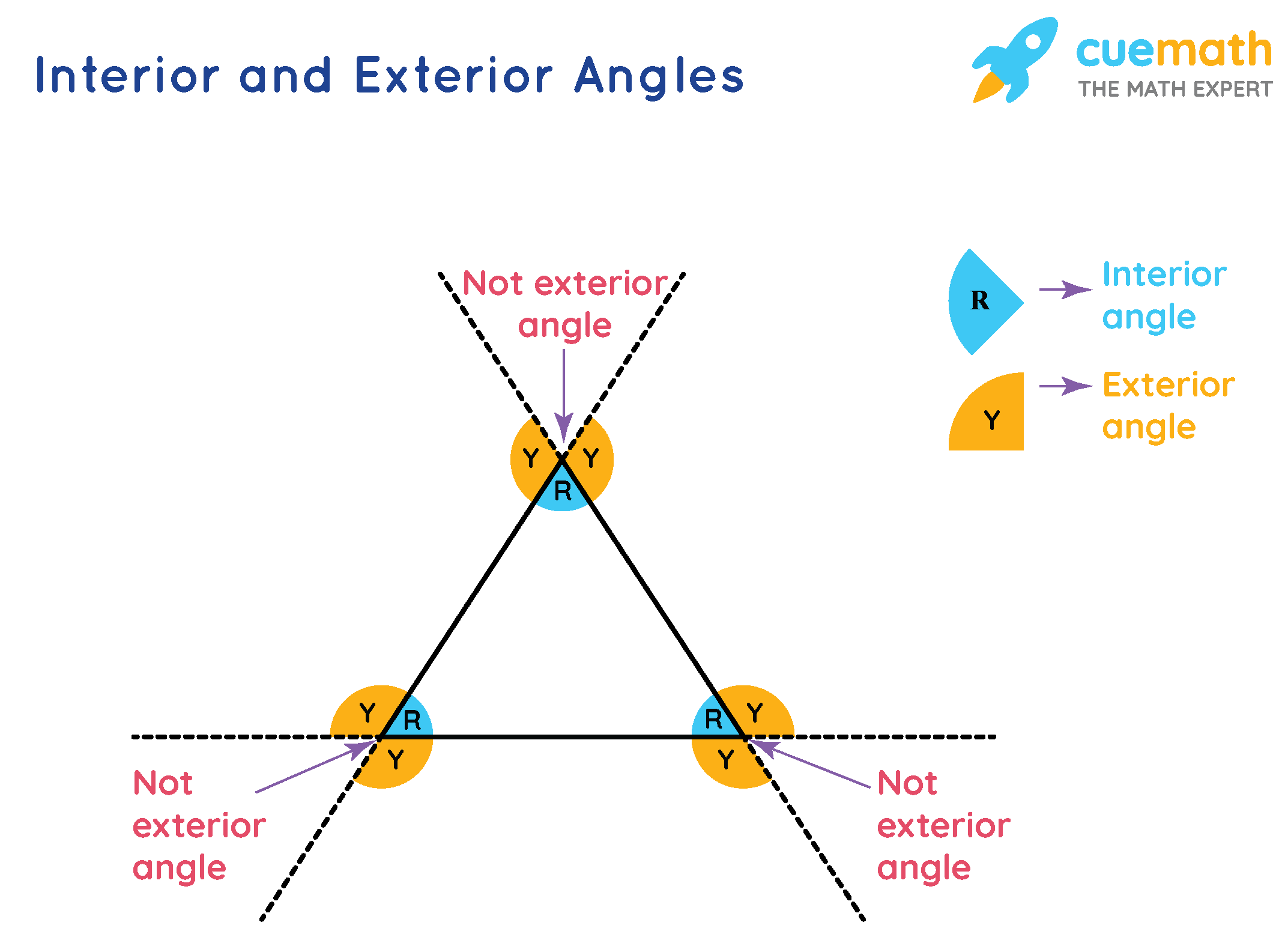Sum of Exterior Angles Formula
Before going to know the sum of exterior angles formula, first, let us recall what is an exterior angle. An exterior angle of a polygon is the angle between a side and its adjacent extended side. This can be understood clearly by observing the exteriors angles in the below triangle. The sum of exterior angles formula says the sum of all exterior angles in any polygon is 360°.

What Is the Sum of Exterior Angles Formula?
From the above triangle, the exterior angles Y and R make up a linear pair.( Y + R = 180°). And this gives, Y = 180° - R.
Sum of all three exterior angles of the triangle:
Y + R + Y + R + Y + R = 180° + 180° + 180°
3Y + 3R = 540°
Sum of interior angles of a triangle:
R + R + R = 180°
3R = 180°.
Substituting this in the above equation:
3Y + 180° = 540°
3Y = 540° - 180°
3Y = 360°
Therefore the Sum of exterior angles = 360°
Thus, the sum of all exterior angles of a triangle is 360°. In the same way, we can prove that the sum of all exterior angles of any polygon is 360°. Thus, the sum of exterior angles can be obtained from the following formula:
Sum of exterior angles of any polygon = 360°
Each exterior angle of a regular polygon of n sides = 360° / n.
Let us check a few solved examples to learn more about the sum of exterior angles formula.

Solved Examples on Sum of Exterior Angles Formula
Example 1: Find the measure of each exterior angle of a regular hexagon.

Solution:
To find: The measure of each exterior angle of a regular hexagon.
We know that the number of sides of a hexagon is, n = 6.
By the sum of exterior angles formula,
Each exterior angle of a regular polygon of n sides = 360° / n.
Substitute n = 6 here:
Each exterior angle of a hexagon = 360° / 6 = 60°
Answer: Each exterior angle of a regular hexagon = 60°.
Example 2: Use the sum of exterior angles formula to prove that each interior angle and its corresponding exterior angle in any polygon are supplementary.
Solution:
To prove: The sum of an interior angle and its corresponding exterior angle is 180°.
Let us consider a polygon of n sides.
By the sum of exterior angles formula,
Sum of exterior angles of any polygon = 360°
By the sum of interior angles formula,
Sum of interior angles of any polygon = 180 (n - 2)°
By adding the above two equations, we get the sum of all n interior angles and the sum of all n exterior angles:
360° + 180 (n - 2)° = 360° + 180n - 360° = 180n
So the sum of one interior angle and its corresponding exterior angle is:
180n / n = 180°
Answer: An interior angle and its corresponding exterior angle in any polygon are supplementary.
visual curriculum